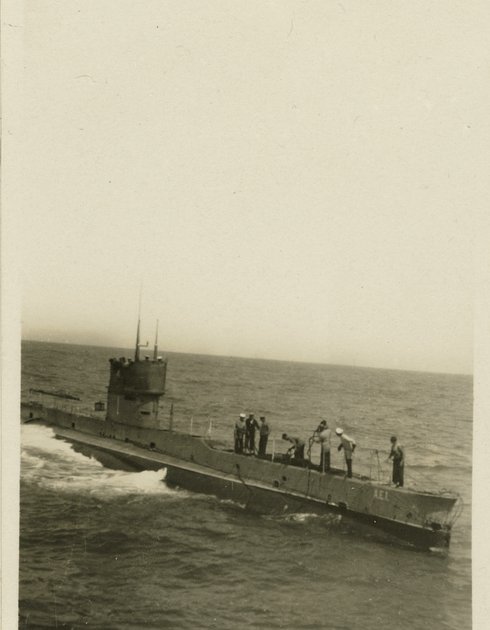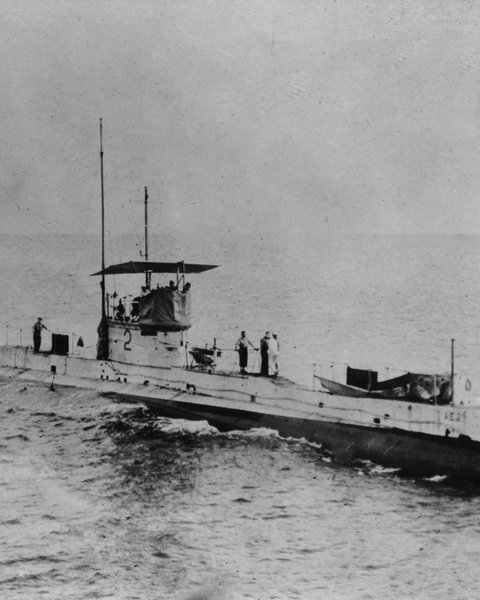HMAS AE1
E-class submarine of the Royal Australian Navy (RAN)

Image provided by Australian National Maritime Museum
The Beginning
E class vessel, HMAS AE1 was the first submarine to serve in the RAN. AE1 was built by Vickers Limited at Barrow-in-Furness, England, and commissioned into the RAN in February 1914, reaching Sydney on 24 May of the same year. She had a range of 3,000 nautical miles (5,600 km) while on the surface and 65 nautical miles submerged.
An updated version of the preceding D-class submarine, the E class was enlarged to accommodate an additional pair of broadside torpedo tubes. AE1 had four 18-inch torpedo tubes, one each in the bow and stern, plus two on the broadside, one firing to port and the other to starboard. The boat carried one spare torpedo for each tube. No guns were fitted.
AE1 was 55.2 m long, with a beam of 6.9 m and a draught of 3.8 m. Originally designed to dive to just 30.5 m, the addition of watertight bulkheads strengthened the hull and increased the actual diving depth 61.0 m. The complement consisted of 34 men.
The boat had two propellers, each of which was driven by an eight-cylinder, 600 kW diesel engine as well as a 313 kW) electric motor. This arrangement gave the E-class submarines a maximum speed of 15 knots (28 km/h) while surfaced and 10 knots (19 km/h) when submerged.
At the outbreak of World War I, AE1, commanded by Lieutenant Commander Thomas Besant, was part of the Australian Naval and Military Expeditionary Force sent to attack German New Guinea. Along with AE2, she took part in operations leading to the occupation of the German territory, including the surrender of Rabaul on 13 September 1914. The submarine's involvement was recognised with the retroactive award of the honour "Rabaul 1914".
AE1 was lost at sea with all hands near what is now East New Britain, Papua New Guinea, on the 14th September 1914, after less than seven months in service; AE1 was on war patrol protecting the Fleet anchorage when she disappeared; it was Australia's first major loss of World War I.
Although search missions began in 1976, the submarine wasn't located until December 2017, near the Duke of York Islands, during the 13th recovery mission.
In 2018, a team of researchers headed by the National Maritime Museum director Kevin Sumption concluded that a ventilation valve – likely opened to make the tropical conditions more bearable while the submarine was cruising on the surface – was insecure when the submarine dived, causing a flood of the engine room and total loss of control of the AE1. The submarine subsequently sank below 100 metres and imploded, killing everyone on board instantly.
